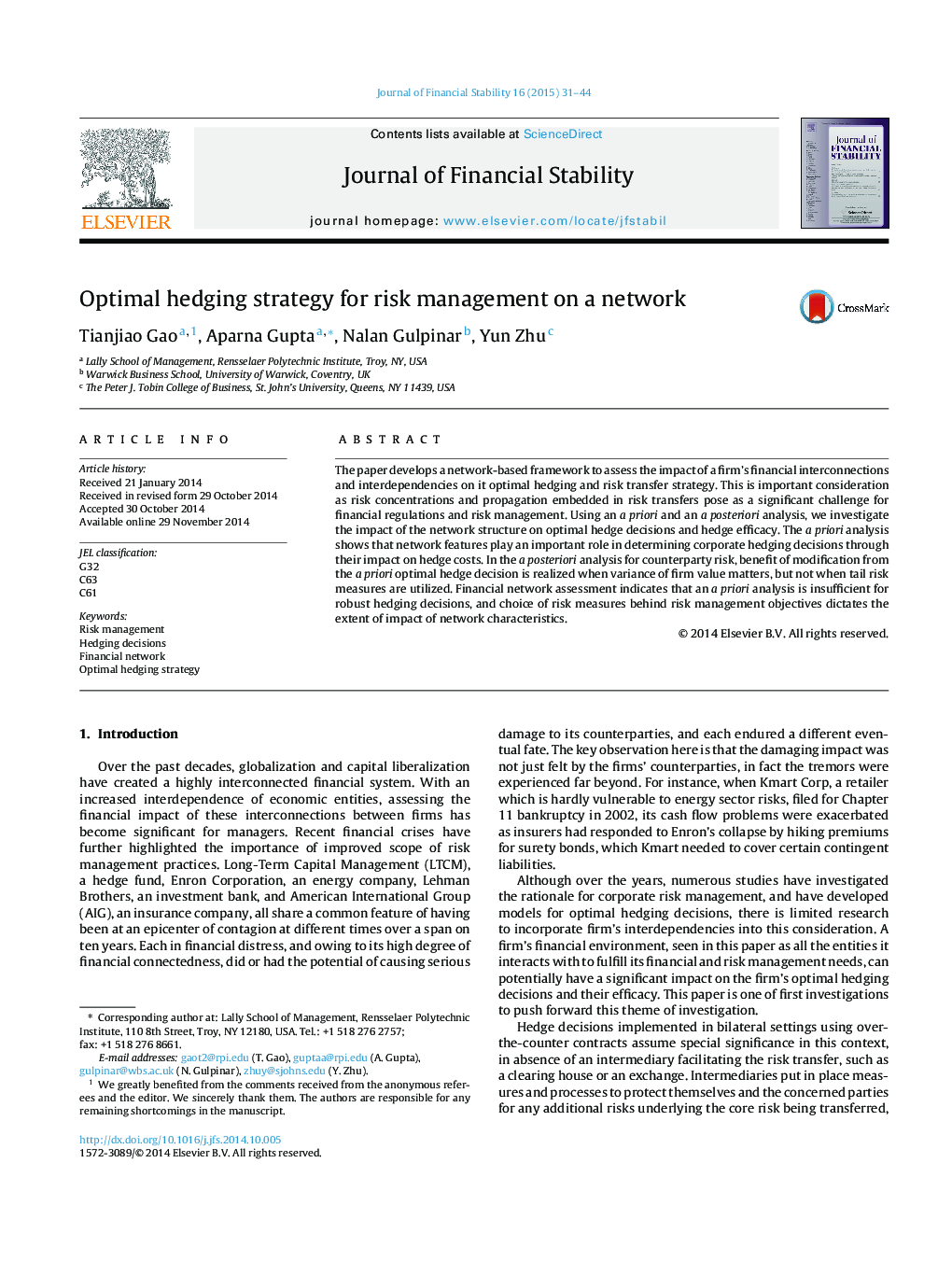| Article ID | Journal | Published Year | Pages | File Type |
|---|---|---|---|---|
| 1000021 | Journal of Financial Stability | 2015 | 14 Pages |
•We assess impact of a firm's financial interconnections on its hedging decisions.•Framework incorporates characteristics of firms and their interconnections.•An investment fund's equity risk transfer decisions are evaluated.•We find that hedge costs greatly influence the choice of counterparties for hedging.•Hedge decisions in the a posteriori analysis depend on risk management objectives.
The paper develops a network-based framework to assess the impact of a firm's financial interconnections and interdependencies on it optimal hedging and risk transfer strategy. This is important consideration as risk concentrations and propagation embedded in risk transfers pose as a significant challenge for financial regulations and risk management. Using an a priori and an a posteriori analysis, we investigate the impact of the network structure on optimal hedge decisions and hedge efficacy. The a priori analysis shows that network features play an important role in determining corporate hedging decisions through their impact on hedge costs. In the a posteriori analysis for counterparty risk, benefit of modification from the a priori optimal hedge decision is realized when variance of firm value matters, but not when tail risk measures are utilized. Financial network assessment indicates that an a priori analysis is insufficient for robust hedging decisions, and choice of risk measures behind risk management objectives dictates the extent of impact of network characteristics.
